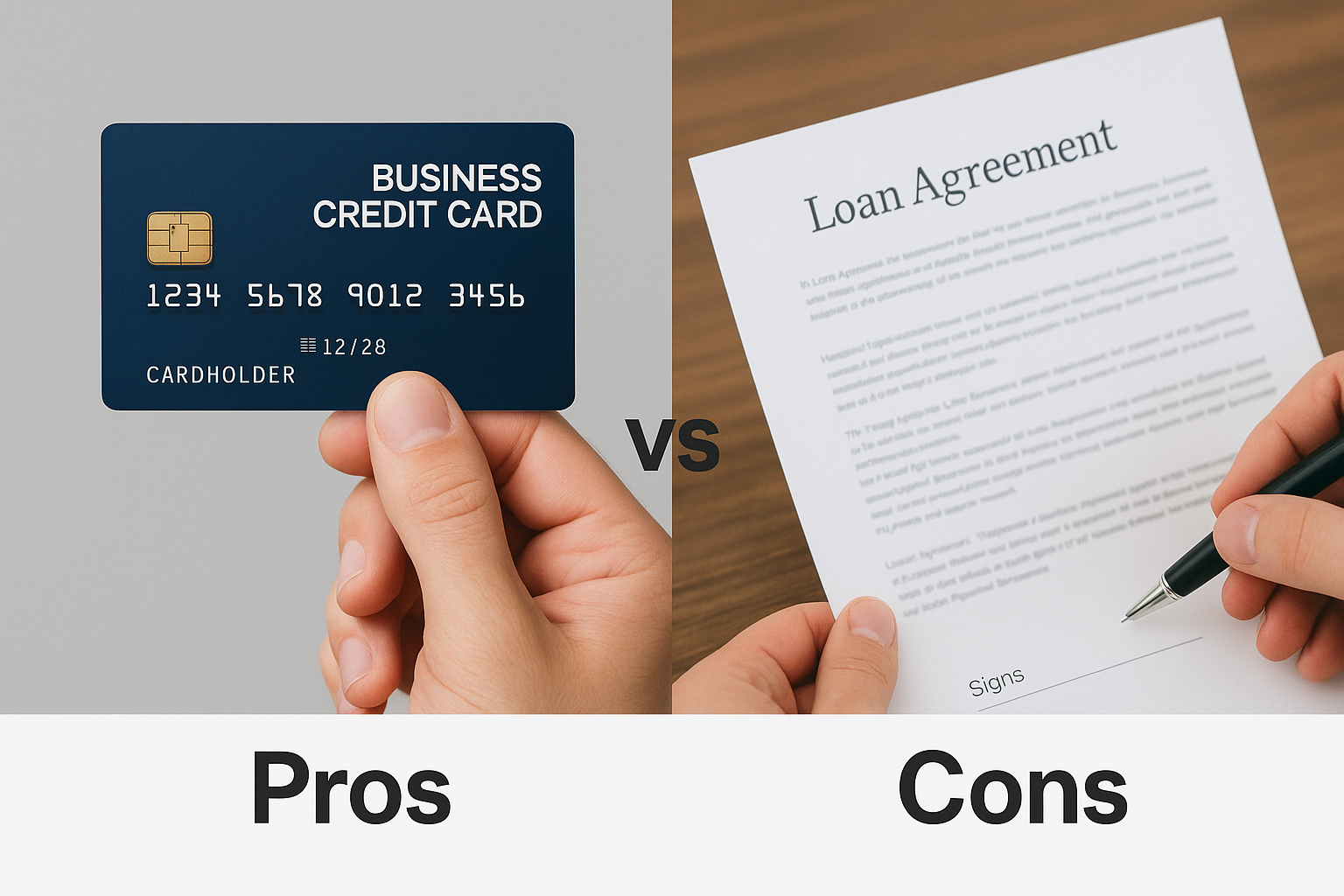1 (800) 584-0324
Inflation, cash flow crunches, and rising expenses often push business owners to look for flexible financing. One common question is whether a business credit card vs loan is the better option. Both tools provide access to capital, but their structures, costs, and uses differ significantly.
This guide breaks down the pros and cons of business credit card vs loan, so you can make an informed decision tailored to your company’s needs.
Business Credit Card vs Loan: Core Differences
| Factor | Business Credit Card | Business Loan |
| Funding Amount | Typically $5,000 – $50,000 limit | Can range from $10,000 to $5M+ |
| Interest Rates | 14–25% APR (higher if carrying balance) | 6–12% (banks/SBA), higher for alt. lenders |
| Remboursement | Revolving—pay minimum or full balance | Fixed installments over set term |
| Speed | Instant access once approved | 2–8 weeks for underwriting & funding |
| Flexibility | Very flexible, use anytime | Restricted to approved use of funds |
| Credit Impact | Builds business credit if used responsibly | Builds business credit with on-time repayment |
Pros of Business Credit Cards
- Quick approval and access: Great for emergencies or unplanned expenses.
- Revolving credit: Reuse as you pay down balances.
- Rewards and perks: Cashback, travel points, or discounts on business purchases.
- Helps build business credit: When payments are made on time.
Cons of Business Credit Cards
- High interest rates: Carrying balances can get expensive fast.
- Low limits compared to loans: May not cover large purchases.
- Risk of mixing personal and business expenses: Can hurt bookkeeping.
- Variable rates: Costs may rise with interest rate hikes.
Pros of Business Loans
- Larger amounts available: Suitable for expansion, equipment, or real estate.
- Lower interest rates: Especially with SBA, CSBFP, or BDC programs.
- Structured repayment: Predictable installments improve cash-flow planning.
- Multiple formats: Term loans, lines of credit, equipment financing.
Cons of Business Loans
- Slower process: Applications require financials, tax returns, and underwriting.
- Collateral or guarantees required: SBA loans, for example, often require PGs.
- Less flexible: Funds are usually earmarked for a specific purpose.
- Fees and covenants: May include origination fees or ratio tests.
When to Use a Business Credit Card
- Covering short-term expenses like travel, supplies, or utilities.
- Taking advantage of rewards programs for frequent purchases.
- Managing smaller cash-flow gaps under $20,000.
- Building your business credit profile over time.
When to Use a Business Loan
- Financer large one-time expenses (equipment, property, acquisitions).
- Refinancing higher-cost debt (including credit cards).
- Financement expansion projects like opening new locations.
- Covering long-term working capital needs.
U.S. vs Canada Considerations
- U.S.: SBA loans provide structured, low-cost financing; credit cards are widely available but carry higher APRs.
- Canada: The CSBFP and BDC offer affordable loan programs. Business credit cards exist but with similar high-interest trade-offs as in the U.S.
Key Takeaway
A business credit card vs loan comparison comes down to purpose and scale:
- Use credit cards for flexibility, small expenses, and rewards.
- Use loans for larger, strategic investments with longer payback periods.
Many businesses use both: a loan for major purchases and a card for recurring expenses.
Not sure whether a business credit card vs loan is right for you? At Agile Solutions, we help businesses in the U.S. and Canada secure financing—whether through loans, credit facilities, or blended strategies.
👉 Book a consultation today at agilesolutions.global or email us at info@agilesolutions.global
#BusinessCredit #BusinessLoan #BusinessCreditCard #WorkingCapital #SBALoan #BDC #CSBFP #BusinessFinancing #PrivateDebt #CapitalMarkets



